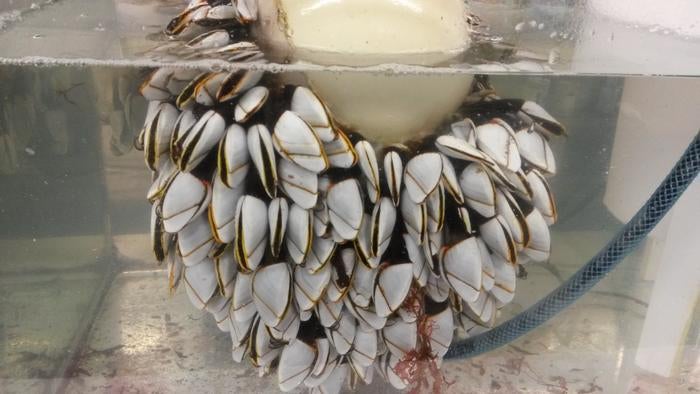Barnacles could help find location of lost Malaysia Airlines flight MH370, scientists say
New approach ‘might help bring some closure to the families of those on the missing plane,’ scientists say
Your support helps us to tell the story
From reproductive rights to climate change to Big Tech, The Independent is on the ground when the story is developing. Whether it's investigating the financials of Elon Musk's pro-Trump PAC or producing our latest documentary, 'The A Word', which shines a light on the American women fighting for reproductive rights, we know how important it is to parse out the facts from the messaging.
At such a critical moment in US history, we need reporters on the ground. Your donation allows us to keep sending journalists to speak to both sides of the story.
The Independent is trusted by Americans across the entire political spectrum. And unlike many other quality news outlets, we choose not to lock Americans out of our reporting and analysis with paywalls. We believe quality journalism should be available to everyone, paid for by those who can afford it.
Your support makes all the difference.Scientists have developed a new technique to reconstruct the path and origin of debris from the missing flight MH370 that was lost over the Indian Ocean in 2014 with 239 passengers.
The method, described in the journal AGU Advances,involves analysing the shell chemistry of barnacles to determine the environmental circumstances such as the temperature and ocean drift conditions under which the marine organisms grew.
Researchers, including Gregory Herbert from the University of South Florida, began working on the idea when they saw photographs of the plane debris that washed ashore Reunion Island off the coast of Africa a year after the crash.
“The flaperon was covered in barnacles and as soon as I saw that, I immediately began sending emails to the search investigators because I knew the geochemistry of their shells could provide clues to the crash location,” Dr Herbert said.
Shelled organisms like barnacles grow their shells every day producing layers similar to tree rings, with the chemistry of each layer determined by temperature of the surrounding water at the time it was formed.
Over the last two decades, scientists have created and refined a method to extract ocean temperatures stored in the chemistry of invertebrate shells.
In the new study, researchers conducted an experiment with live barnacles to read their chemistry and unlock, for the first time, temperature records from their shells.
They then applied the method to small barnacles collected from some of the fragments recovered from MH370 to reconstruct the marine organisms’ water temperature records.
Combining oceanographic modelling with the temperature records, scientists could successfully generate a partial ocean drift pattern for the missing flight’s fragment.
“Sadly, the largest and oldest barnacles have not yet been made available for research, but with this study, we’ve proven this method can be applied to a barnacle that colonised on the debris shortly after the crash to reconstruct a complete drift path back to the crash origin,” Dr Herbert said.

Until now, the search for the missing flight has spanned several thousands of miles along a north-south corridor deemed “The Seventh Arc”, where investigators suspect the plane may have glided after running out of fuel.
Since ocean temperatures can change rapidly along the arc, researchers believe the new method could reveal precisely where the plane is.
From analysing some of the barnacles attached to the recovered flight fragment, they found the largest barnacles on it were likely old enough to have colonised on the wreckage “very shortly” after the crash and “very close” to the actual crash location where the plane can be found now.
“If so, the temperatures recorded in those shells could help investigators narrow their search,” Dr Herbert said.
Even if the plane is not in this arc, studying the oldest and largest barnacles can still narrow down the areas to search in the Indian Ocean.
“The plane disappeared more than nine years ago, and we all worked aiming to introduce a new approach to help resume the search, suspended in January 2017, which might help bring some closure to the tens of families of those on the missing plane,” said Nassar Al-Qattan, one of the authors of the study.
“Knowing the tragic story behind the mystery motivated everyone involved in this project to get the data and have this work published,” he said.



Join our commenting forum
Join thought-provoking conversations, follow other Independent readers and see their replies
Comments